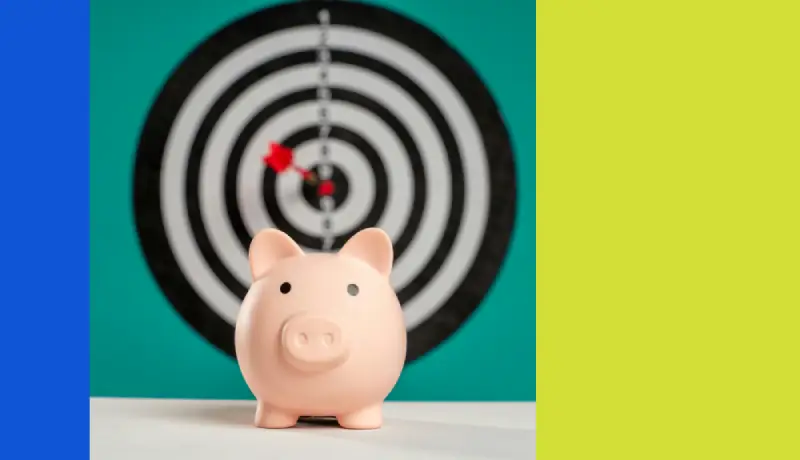Photo by Taryn Elliott from Pexels
Equities and cryptocurrencies are kissing their all-time highs, crude and commodity prices are at a multiyear high with levels last seen in 2014. This year, 2021, is turning out to be quite the winner for investors in risk assets. Anyone who has been an investor in capital markets over decades, however, knows that markets move in cycles and cycles turn. Triggers for such turns can vary and so can the time spent in the cycle and in the turnaround, the key is to recognize that there are risk factors at play. When these start to bubble, you need to be aware and take action accordingly.
InflationInflation is a common term thrown around in economics lessons and by politicians around election time. What it means in simple language is that prices of things you buy, stuff, keeps increasing every year. It happens because the economy in... More risk
The risk factor that seems to be bubbling at the moment is inflationInflation is a common term thrown around in economics lessons and by politicians around election time. What it means in simple language is that prices of things you buy, stuff, keeps increasing every year. It happens because the economy in... More. Global inflationInflation is a common term thrown around in economics lessons and by politicians around election time. What it means in simple language is that prices of things you buy, stuff, keeps increasing every year. It happens because the economy in... More for 2021 is at an estimated 3.5% which is almost 10% above the 2020 level, closer to what we saw in 2018-2019 and significantly higher than the two previous years. This is not a surprise, given the way commodity prices have been rising. Food prices too have shot up in the last one year. The impact of this is bound to show up in the global inflationInflation is a common term thrown around in economics lessons and by politicians around election time. What it means in simple language is that prices of things you buy, stuff, keeps increasing every year. It happens because the economy in... More rate.
The more worrying aspect is how inflationInflation is a common term thrown around in economics lessons and by politicians around election time. What it means in simple language is that prices of things you buy, stuff, keeps increasing every year. It happens because the economy in... More in the world’s largest economy, the US, has shot up. The latest reading stands at 5.4% which is a decadal high and a significant portion of this has come in the last year.
The repercussion of this is potential interest rate hikes. The US ten-year treasury yield is at 1.7%; while short term yields remain flat, the gap in the medium to long term part of the yield curve has widened noticeably.
Again, inflationInflation is a common term thrown around in economics lessons and by politicians around election time. What it means in simple language is that prices of things you buy, stuff, keeps increasing every year. It happens because the economy in... More is no surprise given the fluid monetary policy and large-scale printing of money, but such a spike in inflationInflation is a common term thrown around in economics lessons and by politicians around election time. What it means in simple language is that prices of things you buy, stuff, keeps increasing every year. It happens because the economy in... More may become a sustained trend, necessitating a rate hike in the coming quarters. This is perhaps the expectation getting priced into the medium-long term part of the US treasury bill yield curve, where yields have spiked considerably.
The India story
What difference does that make to you, sitting in India and making your risk asset trades? Firstly, inflationInflation is a common term thrown around in economics lessons and by politicians around election time. What it means in simple language is that prices of things you buy, stuff, keeps increasing every year. It happens because the economy in... More is not just a US story, it’s very much part of the India story too. The rapidly rising fuel costs are going to show up in retail inflationInflation is a common term thrown around in economics lessons and by politicians around election time. What it means in simple language is that prices of things you buy, stuff, keeps increasing every year. It happens because the economy in... More sooner than later. Moreover, quarterly results of two large consumer-oriented companies, HUL and Asian Paints, have shown that despite an increase in revenues and sales volume, profit growth is missing thanks to rising raw material cost and contracting margins.
Corporates will not bear this cost for long which in turn leads to price hikes in consumption goods. This will only add to retail inflationInflation is a common term thrown around in economics lessons and by politicians around election time. What it means in simple language is that prices of things you buy, stuff, keeps increasing every year. It happens because the economy in... More in India.
As inflationInflation is a common term thrown around in economics lessons and by politicians around election time. What it means in simple language is that prices of things you buy, stuff, keeps increasing every year. It happens because the economy in... More plays a spoiler across industries, it will be up to individual companies on how they manage margins and how much of the rise in cost they are able to pass on through price hikes. A sustained uptick in inflationInflation is a common term thrown around in economics lessons and by politicians around election time. What it means in simple language is that prices of things you buy, stuff, keeps increasing every year. It happens because the economy in... More can also lead to a hike in interest rates in India, which will be negative for corporate margins. Hence, equity prices are perhaps looking at elevated risk in the coming quarters on account of margin pressure and stress on earnings per share.
Lastly, the Indian rupee is also within kissing distance of the all-time high rate against the USD dollar. Given that we import 70% of our crude oil requirement and gold imports have shot up in the last quarter, imported inflationInflation is a common term thrown around in economics lessons and by politicians around election time. What it means in simple language is that prices of things you buy, stuff, keeps increasing every year. It happens because the economy in... More is also on the horizon.
All of this corroborates higher risk to equity prices in the domestic equity market, which is what one has to watch out for in the coming quarters.
Crypto will save you from inflationInflation is a common term thrown around in economics lessons and by politicians around election time. What it means in simple language is that prices of things you buy, stuff, keeps increasing every year. It happens because the economy in... More
Maybe.
It’s hard to tell the directional trade in cryptocurrencies unless one is tracking it closely. Other than limited supply in the case of Bitcoin and technological prowess in the case of some others, the fundamental basis for price and hence, the price rise is not something one can establish simply.
While Bitcoin is claimed to be the perfect alternative and store of value versus inflationary fiat currencies, the fact is that all Crypto is still valued against the USD. This means that by itself Crypto has not found any value. Secondly, a big part of the shoot up in the crypto trade over the last two years has to do with the relentless printing of the very fiat currency it hopes to replace. Which is also fueling the price rally in other risk assets, equities and commodities.
If indeed high inflationInflation is a common term thrown around in economics lessons and by politicians around election time. What it means in simple language is that prices of things you buy, stuff, keeps increasing every year. It happens because the economy in... More causes a turnaround in the rate cycle, the USD trade ie investing in USD treasury bills will garner interest among institutional investors. This can potentially cause a shift of money away from risk assets and hence, turbulence in crypto prices moving further up, in the immediate context.
There are several other risks when it comes to cryptocurrencies, but at the moment we are just considering whether prices in this space are negatively correlated to inflationInflation is a common term thrown around in economics lessons and by politicians around election time. What it means in simple language is that prices of things you buy, stuff, keeps increasing every year. It happens because the economy in... More. For now, there is no evidence to say so. From April this year to September, cryptocurrency prices were correcting whereas inflationInflation is a common term thrown around in economics lessons and by politicians around election time. What it means in simple language is that prices of things you buy, stuff, keeps increasing every year. It happens because the economy in... More was only going upwards.
The consistent sharp fluctuations in crypto prices make it a poor hedge against inflationInflation is a common term thrown around in economics lessons and by politicians around election time. What it means in simple language is that prices of things you buy, stuff, keeps increasing every year. It happens because the economy in... More, in the short term. The long-term price visibility at the moment rests purely on the assumptive talk around what this can potentially become rather than any concrete evidence that acceptance of fiat currency is waning.
Invest in these as part of your fancy bucket of investmentAn investment is made to give you a return. You make an investment if you use your money to buy either physical assets like property or financial assets like bonds and equity with an aim to receive income or gains... More, but relying on it for a short term store of value or a hedge against inflationInflation is a common term thrown around in economics lessons and by politicians around election time. What it means in simple language is that prices of things you buy, stuff, keeps increasing every year. It happens because the economy in... More might not be the trade that works in your favour.
What now?
What do you do now? Rebalance. If risk asset gains have resulted in portfolio allocation being lopsided, then just book those gains and invest for the time being in stable return fixed income funds. For example, let’s say your risk asset gains have resulted in an asset allocationAsset allocation is essentially an official term for what you intuitively know is a healthy investment practice. For starters most households are likely to own some property and gold. That is diversification in asset allocation. You allocate the money you... More change from 60% to 80%, then book gains equivalent to 20% out of risk and into a stable return. This can help preserve capital to an extent if indeed the capital market cycle turns over the next few months.
With any incremental investments, try not to jump in with a lump sum at this point and just allocate 15%-20% of the amount you want to invest now. Stagger your investmentAn investment is made to give you a return. You make an investment if you use your money to buy either physical assets like property or financial assets like bonds and equity with an aim to receive income or gains... More over the next six months, if there is a turn in the cycle and correction in prices you will get some advantage by investing a portion at lower prices too.
Investing is not complicated and needn’t lead to panic, what you need to do is be aware of the risks and hold back on cowboy moves when risks seem to be elevated.
Endnote:
With vaccinations well underway and vaccines for young children too on the anvil, it seems like the pandemic is now in the past. However, there is no substitute for caution, China is already reporting a recent rise in cases, despite the highest rate of vaccination in the world. Be aware, be careful and focus on capital preservation in times where uncertainty on outcomes continues to remain high. Euphoria can be misplaced in times like this, especially since lockdown fatigue has ensured a consumption boom across the globe.
Weigh your options and only then take a step, it’s definitely not time to jump with a parachute yet.
If you liked this article you might also like:
Not equity returns, it’s asset allocation that matters most

The markets are correcting and that’s no news, but yes, we haven’t seen this sharp a downtrend is a while now.
The pointlessness behind reckless trading risks

Retail traders are rarely able to beat the market. This is what market regulator, SEBI’s study released in July 2024 showed; 7 out of 10 individual intraday traders in the equity have incurred losses in FY2022-23 as per the study.
Equity investing is more reliable than investing in real estate

In a growing economy like India, there are bound to be innumerable stories about how individuals have gained multiple times the value of their investmentAn investment is made to give you a return. You make an investment if you use your money to buy either physical assets like property or financial assets like bonds and equity with an aim to receive income or gains... More in real estate.

